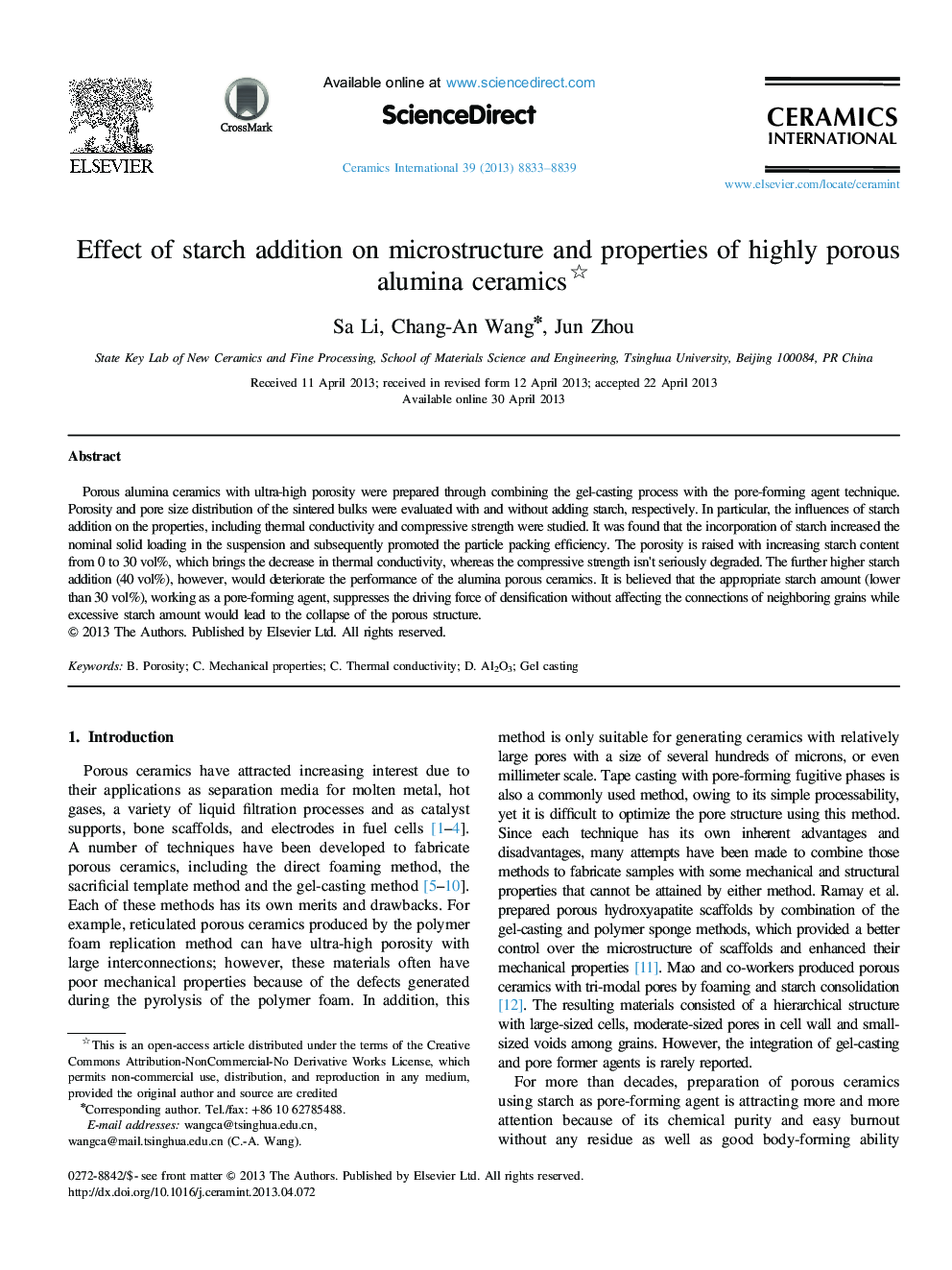| Article ID | Journal | Published Year | Pages | File Type |
|---|---|---|---|---|
| 10625899 | Ceramics International | 2013 | 7 Pages |
Abstract
Porous alumina ceramics with ultra-high porosity were prepared through combining the gel-casting process with the pore-forming agent technique. Porosity and pore size distribution of the sintered bulks were evaluated with and without adding starch, respectively. In particular, the influences of starch addition on the properties, including thermal conductivity and compressive strength were studied. It was found that the incorporation of starch increased the nominal solid loading in the suspension and subsequently promoted the particle packing efficiency. The porosity is raised with increasing starch content from 0 to 30Â vol%, which brings the decrease in thermal conductivity, whereas the compressive strength isn't seriously degraded. The further higher starch addition (40Â vol%), however, would deteriorate the performance of the alumina porous ceramics. It is believed that the appropriate starch amount (lower than 30Â vol%), working as a pore-forming agent, suppresses the driving force of densification without affecting the connections of neighboring grains while excessive starch amount would lead to the collapse of the porous structure.
Related Topics
Physical Sciences and Engineering
Materials Science
Ceramics and Composites
Authors
Sa Li, Chang-An Wang, Jun Zhou,
